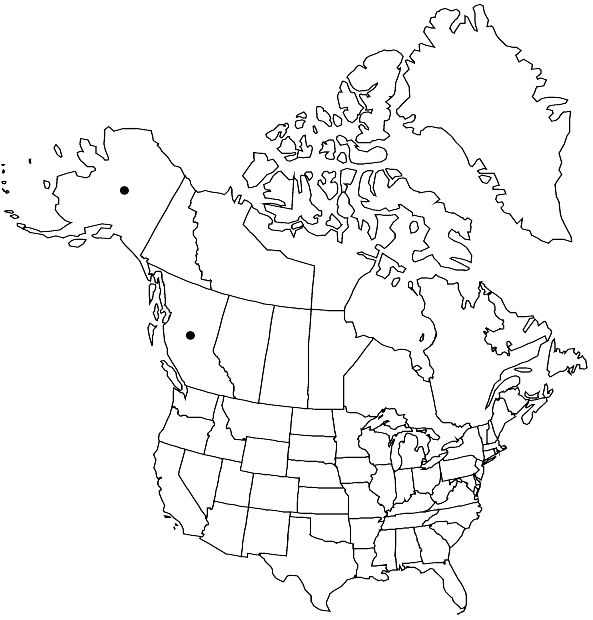Takakia lepidozioides
J. Hattori Bot. Lab. 19: 137, figs. 1–24. 1958,.
Plants with cinnamon-like odor when dry; distal part of leafy shoots not caducous. Stems in cross section usually with 1 layer of thicker walled epidermal cells; stoloniferous stems well developed and extensive above surface of substrate. Leaves typically of 2 segments, not or only occasionally connate at base, some solitary, occasionally of 3–4 segments, sometimes caducous, in cross section of thin-walled cells, in distal part of segment with single large central cell and 7–10 smaller outer cells, these 30–45 × 20–25 µm, irregularly arranged. Slime hairs thin-walled. Sporophytes unknown.
Habitat: Uncommon on moist humus, in usually somewhat shaded habitats, over rocks or on banks, rock crevices, especially near waterfalls, but also on peaty banks in wetland slopes, humid coastal to subalpine and alpine
Elevation: low to moderate elevations (0-1000 m)
Distribution

B.C., Alaska, Asia (Borneo, Japan, Nepal, Taiwan).
Discussion
Takakia lepidozioides grows most frequently in highly humid or misty sites, often deeply shaded. Algae and cyanobacteria are frequent associates. The shoots are often lax, and extensive rhizomatous shoots are conspicuous.
Selected References
None.
